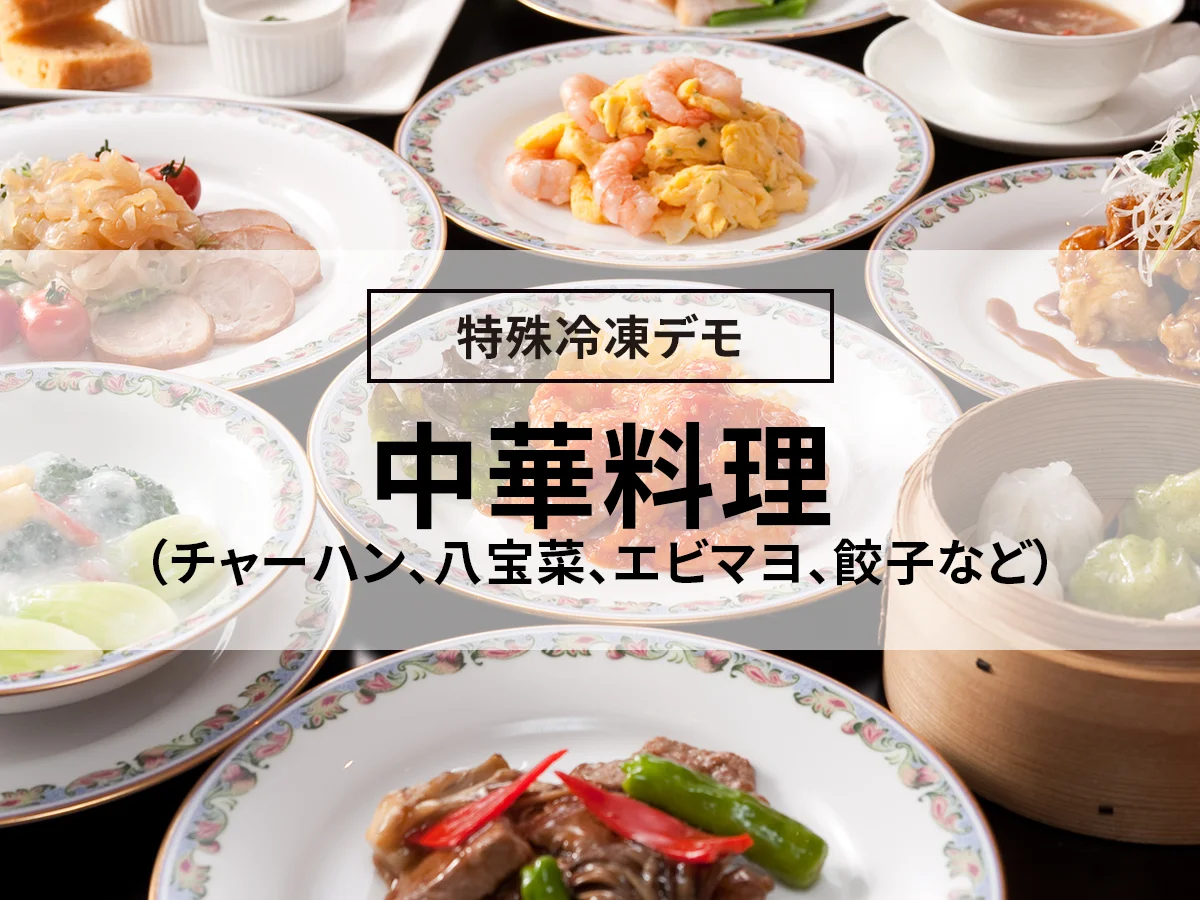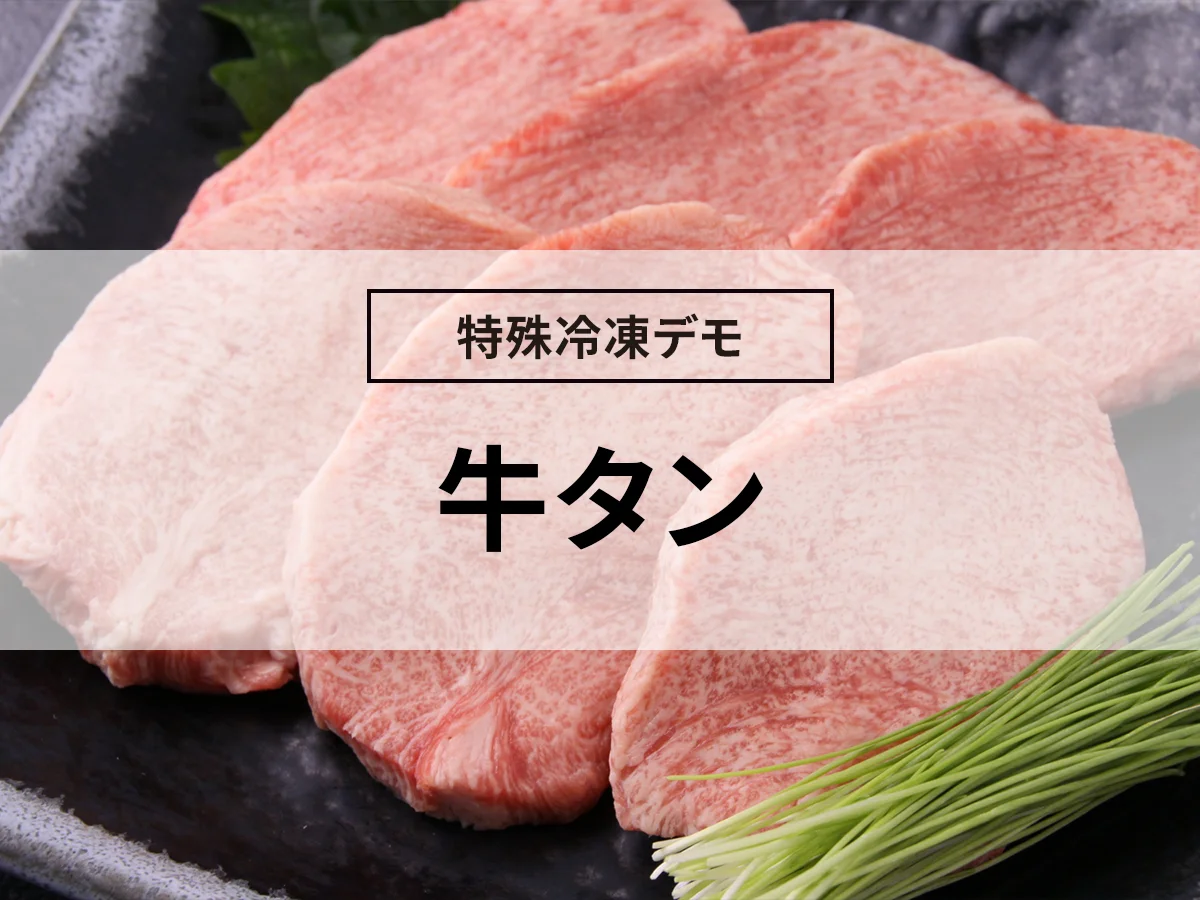[Can be used in a wide range of applications] Performance and price summary of flash freezers

By rapidly freezing seafood that is difficult to maintain freshness, you can preserve the quality of freshly caught seafood.
By using flash freezers, perishable seafood can be distributed anywhere in the country while maintaining the freshness of raw seafood.
Since it can be stored for a long time, you can effectively use what was previously discarded and work on developing new and high-quality products.
目次
Basic knowledge, types, and characteristics of flash freezers
A flash freezer is a freezer that freezes food rapidly to prevent damage caused by freezing to the maximum extent possible.
The term "quick freezing" is originally used, but the term "flash freezing" is also widely used because food can be frozen surprisingly quickly.
When food is frozen, the water in the food turns into ice and expands in volume. At that time, the ice crystals break the cells of the food, causing the flavor components to flow out. The liquid that comes out when frozen fish is thawed is called drip, which is the real flavor component.
By flash freezing, the water in the food passes through the freezing temperature range of -1°C to -5°C (maximum ice crystal formation temperature range), making it possible to freeze the food without destroying cells.
Therefore, even when frozen, the taste and flavor will not deteriorate and the quality will remain the same.

Flash freezers have different freezing methods depending on the machine, and each has its own advantages and features.
<Air blast freezing machine>
Freeze food by blowing cold air at -30℃ to -40℃ directly onto the food. Although it can cool down quickly by blowing strong cold air, the cold air may cause dryness.
A refrigerator called the Artlock Freezer has been developed that can blow cold air from multiple directions and has a non-reflux structure that prevents air from returning to the cooler.
You can protect food from drying out and freeze it in almost the same state as before freezing. Since frost does not easily form on the cooler and there is no load on the freezer, running costs can be reduced.
<Freezer with magnetic field/electromagnetic wave freezing>
This is a freezing machine that combines cold air, magnets, and electromagnetic waves. When the water in food freezes, it controls the generation of ice nuclei, forming many ice nuclei and suppressing the growth of ice crystals.
Since it is possible to freeze food without destroying its cells, it is possible to prevent damage caused by freezing to the maximum extent possible. A wide range of foods can be frozen, and even if you freeze nigiri sushi as is, it retains its deliciousness.
Running costs tend to be high because the cooler is large and a device that generates a magnetic field is attached.
<Liquid freezing refrigerator>
Freeze food by soaking it in chilled brine without using cold air. Liquids have 20 times higher thermal conductivity than air, so they can freeze surprisingly quickly.
Since liquid freezers have small coolers, many of the machines are compact, allowing for efficient use of space even in offices with limited installation space.
However, there is the added trouble of having to vacuum pack the food when it is immersed in liquid.The Re-Joice Freezer constantly stirs the liquid in the tank, allowing for faster and more even freezing.
Suitable for freezing thick seafood and perishable shellfish such as oysters.
<Freezer using liquid nitrogen>
Freeze food by spraying liquid nitrogen gas at -196℃ onto the food.
It can increase work efficiency because of its fast freezing speed, but it requires equipment that can handle liquid nitrogen, so it is mainly used in factories that freeze large quantities of food.
What is the price and cost of a large flash freezer?
There are various types of freezing methods, and some foods are suitable for different machines, but the shape and size of the freezer used will vary depending on the use and purpose. Some businesses, such as seafood processing plants aimed at mass production, have installed large belt conveyor-type instant freezers.
Because they are large, they are more expensive than regular flash freezers. The market price of a typical refrigerator is 3 million to 4 million yen, depending on the size.
Most flash freezers with reliable performance cost more than 1 million yen, so it can be said that the flash freezer itself is an expensive machine. A large machine can cost tens of millions of yen.
In addition, large machines require construction work to install, which increases equipment costs and other expenses, and since there is a lot of frost on the cooler, and the operating capacity is large, running costs and maintenance costs are also high. However, by incorporating it into the production line, work efficiency can be improved and many benefits can be created.

Mechanization eliminates the need for human work, reducing labor costs and preventing dangers such as foreign material contamination. It is highly efficient and can operate for a long period of time, significantly increasing production capacity.
Depending on the food, on average it is possible to produce 300 kg per hour. Products that could not keep up with production and missed sales opportunities can now be produced to meet demand.
It can handle a wide range of products, including bare products and tray products, and can be used in conjunction with other machines. The belt conveyor type allows not only mass production but also safe and secure food production.
Introduction example of flash freezer
Wholesalers of seafood in Hokkaido distribute fresh squid that can be eaten raw to a wide range of areas, including the Kanto region. Frozen squid loses its flavor, and live squid is expensive, making it difficult to provide cheap and delicious products.
By vacuum-packing live squid and flash-freezing it, you can maintain the quality of the squid so that it can be used as a sushi topping. Squid that is as fresh as live squid can be distributed anywhere in the country.
Many seafood processing plants use flash freezers for processing dried fish, pickled fish, fillets, etc., and their introduction is progressing. By flash-freezing and processing seafood caught in large quantities during the seasonal season, you can use what you have purchased at a low price without wasting it.

In addition, processing plants that have large conveyor-belt freezers are used for mass production of seafood fillets and fried oysters.
Seafood is particularly difficult to maintain sanitary control among food products, so large processing plants use rapid freezing technology and line automation to ensure efficient operations. You can produce more fresh, high-quality products.
Some seafood processing companies are working to effectively utilize unused fish that have low market value. Fish and shellfish of nonstandard sizes, such as barracuda and cutlassfish, are traded at low prices for use as feed. Conger conger, which is a high-quality fish, is difficult to trade when it is out of season, which is a headache for fishermen.
In collaboration with wholesale markets and fishermen, we use unused fish such as irregular or substandard fish that cannot be sold on the market, process them into surimi, and use them to make kamaboko and other items.
By flash freezing and preserving, you can stably procure raw materials, and you can sell seafood that was previously thrown away as a product. Plans are underway to develop new products and expand sales channels.
Conclusion
By flash freezing seafood that loses its freshness quickly, you can preserve the quality of freshly caught seafood for a long period of time.
We can deliver the natural deliciousness of seafood to a wider range of people.
Also, since you can use it effectively without wasting it, you can propose new products and increase profits.
Why not take advantage of these benefits and consider the optimal use of seafood?








![[Storage period increased by 30 times! ] Achieving a stable supply of raw whitebait!](https://shunkashutou.com/wp-content/uploads/2016/11/579c55e6d32e1385c250e8e7c3ed59a71.jpg)
![[Sales increased 100 times! ] rapid freezing the signature menu “Ni-katsu sandwich”!](https://shunkashutou.com/wp-content/uploads/2016/11/IMG_02391.jpg)
![[Horse sashimi] We have significantly reduced waste loss with rapid freezer!](https://shunkashutou.com/wp-content/uploads/2016/11/5fda59d0cbcdabde18e58c3c58c09ed0.jpg)




![[Storage period increased from 3 days to half a year! ] Restaurants are expanding their business using wholesale and mail order!](https://shunkashutou.com/wp-content/uploads/2018/04/66c19942ab4ba346fdb64ccc04cde373.png)
![[Reduce loss from 200 kg of oysters to zero] Improve loss and expand business with rapid freezer](https://shunkashutou.com/wp-content/uploads/2018/06/19785ca583a8d3c4041c7c192d041b0d.jpg)


















